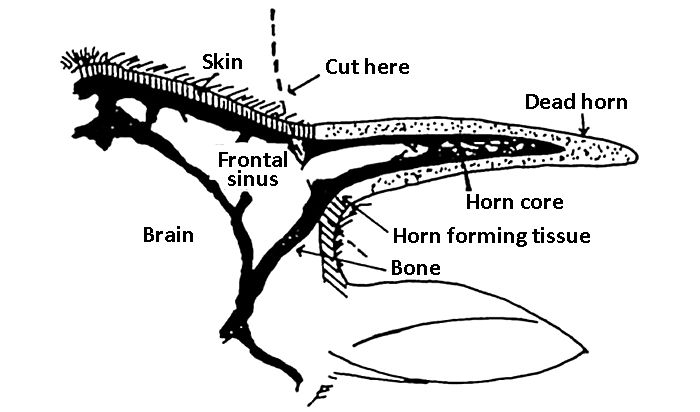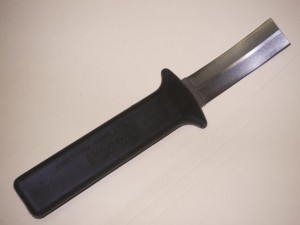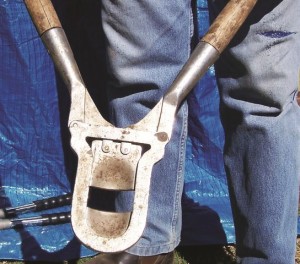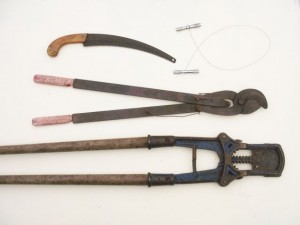Dehorning
Dehorning is the removal of the horns from cattle. It is a labour-intensive, skilled operation with important animal welfare implications.
Horns are detrimental to cattle from a welfare and production perspective, and pose a potential safety risk to cattle handlers. Dehorning should only be done when necessary and in accordance with the Australian Animal Welfare Standards and Guidelines for Cattle to minimise the risk to the welfare of the cattle, particularly pain and distress.
Breeding polled cattle is a long-term solution to the problems commonly associated with horned cattle and the issue of dehorning.
Why dehorn?
Bruising costs the Australian beef industry over $30 million each year – equivalent to $4 for every beast slaughtered. Evidence indicates that the single major cause of bruising is the presence of horns.
Horned or tipped cattle (as compared to hornless cattle):
- can cause injury to other cattle especially in yards and when in transport
- can cause significant damage to hides and carcase quality
- cause more damage to infrastructure
- need more space during transport
- harder to handle in yards and crushes
- can be more aggressive to other animals
- are more hazardous to people.
Tipping (removal of the insensitive sharp end of the horn) is not dehorning. It does little to reduce the disadvantages of having horned cattle, for example it does not reduce bruising, and tipped cattle can still be a danger to other cattle and handlers.
Factors for consideration
Hygiene
Good hygiene (facilities, hands, handling and instruments) is very important to prevent infection after dehorning. Tools should be disinfected between animals with the disinfectant changed frequently.
Where possible, muddy and dusty conditions should be avoided as the risk of infection is greatly increased. All equipment should be cleaned thoroughly after use.
Age
The younger the animal at the time of dehorning, the better it is for the animal and the easier the job for the operator. There is less pain and stress for the animal and there is less risk of infection or fly strike. Smaller animals are easier to handle and restrain.
Removing horns from older cattle, yearlings and adults is time consuming, painful for the animal and increases the chances of a setback. It is not recommended to dehorn animals over 12 months of age unless undertaken by a veterinarian and is illegal in some states and territories.
Pain relief
According to the Australian Animal Welfare Standards and Guidelines for Cattle pain relief must be used when dehorning, unless cattle are:
1. less than six months old or
2. less than 12 months old if at their first yarding and where the later age is approved in the jurisdiction (state or territory legislation).
Condition of the animal
Dehorning is not recommended when an animal is in poor condition, or if it has other health problems. In this case, the animal should be dehorned when it is in better health/condition as it will heal more quickly.
Anatomy of the horn
The horn core is a bony extension of the skull and the hollow centre of the core communicates directly with the sinuses of the skull. The horn grows from the skin around its base, just as the wall of the hoof grows down from the skin of the coronet. To ensure no horn regrowth, it is essential to cut away 1cm of skin around the base of the horn.
Method
The method of dehorning should be matched to the size of the horn and the age of the animal for optimum effectiveness. The key to successful dehorning is the removal of a complete ring of hair (~1cm wide) around the horn base. The level of skill of the operator and personal preference for a particular method will also be a consideration. There is no one method for a particular animal age or horn size.
1. The dehorning knife
The dehorning knife has a curved blade designed to remove about 1 cm of skin around the horn bud. It is ideal for calves (up to 2-3 months of age) with a mobile horn bud i.e. not attached to the skull. The procedure is very quick and there is no regrowth if the job is done properly. The knife must be kept sharp. The dehorning knife will give excellent results with practice. Dehorning calves with a knife minimises tissue damage and avoids exposing the sinus cavity. Once the bud has grown solid to the skull a small scoop dehorner may be a better choice.
2. The dehorning iron
The use of dehorning irons does not result in an open, raw wound. Dehorning irons are made like number ‘O’ branding irons and can come in a variety of sizes but usually have a diameter of 50 mm. The iron must be approximately 1 cm bigger than the horn bud all around. The hot iron is placed over the horn bud and the surrounding tissue and twisted a few times. This technique ensures that the blood supply will be seared off and the horn bud area will die and drop off. This technique is only suitable for calves up to about 2 months, because the horns become too big for the dehorning iron .
3. Scoop dehorners
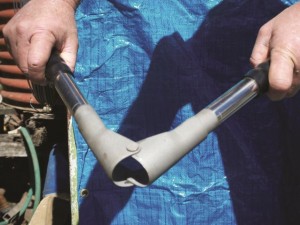
Scoop dehorners are used by passing them vertically down the horn and pushing the handles outward thereby scooping out the horn. As with other methods the head of the animal must be well restrained. Scoop dehorners come in a number of sizes and it is important the right size instrument is used on the appropriate animal. The larger size scoop dehorners can leave a deep hole if used on too smaller animal, but are useful for weaners and older cattle.
4. Cup dehorners
Calves that are too big to dehorn with a knife, hot iron or scoops can be dehorned with cup dehorners, which will handle cattle up to 12 months of age. Again it is necessary to take a complete ring of skin around the horn base.
5. Guillotine dehorners, surgical wire, horn saw and tippers
Guillotine dehorners, surgical wire, horn saw and tippers are used on adult cattle with larger horn growth and should only be used for tipping.
Horn saws, parrot teeth tippers and surgical wire should only be used to tip the horns of adult cattle i.e. remove only the insensitive part of the horn. If used to remove more horn, or dehorn cattle, these instruments should then only be used by a veterinarian, or under the direction of a veterinarian. Local anaesthetic should be used. Dehorning cattle over 12 months of age is not recommended and is illegal in some states.
Tipping as compared to dehorning does not reduce bruising.
Treatment after dehorning
- Animals bleed freely after dehorning. This is normal and helps to clean the wound. However, bleeding should be minimised by selecting the appropriate dehorning tool, preventing overheating of calves and allowing them to settle after mustering.
- Fly strike is a problem when animals have an open wound but if dehorning is carried out in a hygienic manner, wounds heal up quickly. Do not apply an insecticide straight on the wound, but rather around the wound. Wound disinfectants can be applied to the wound to reduce infection risks.
- Avoid leaving animals in the yard after dehorning as this increases the risk of infection.
- Ensure dehorned stock have access to good nutrition.
